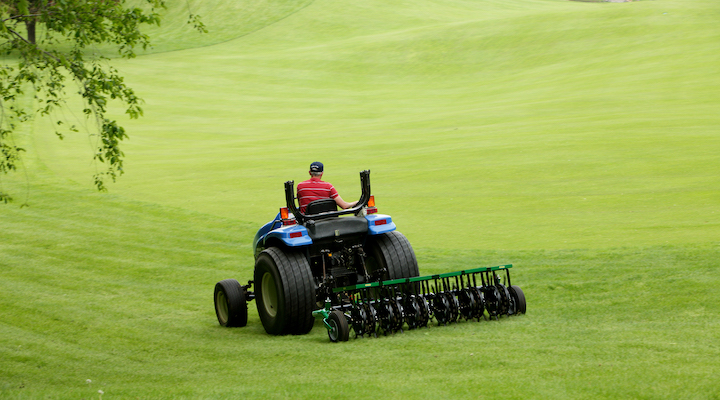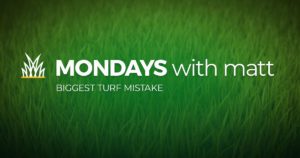WHAT IS AERATION?
Aeration is a lawn maintenance practice that removes soil plugs or slices the turf and opens passageways through thatch and into the soil. This promotes a healthy exchange of oxygen and carbon dioxide and helps your lawn to breathe. The passageways also give water and fertilizer a pathway to your lawn’s root zone where roots can take them up more efficiently. Aeration encourages root growth by reducing thatch buildup and soil compaction.
HOW CAN I TELL IF MY LAWN NEEDS AERATING?
Over time, the soil beneath your lawn gets compacted and thatch accumulates. If your yard has not been aerated within the last year, it needs aerating.
WHAT WOULD HAPPEN IF I NEVER AERATED MY LAWN?
Eventually, you would have a weak and sick looking lawn that is susceptible to weeds and disease and is harder to maintain. But aeration is just one practice used to ensure a healthy lawn. Proper watering, fertilization, mowing and pest control are also important maintenance practices.
WHEN SHOULD I AERATE AND HOW OFTEN?
At a minimum, you should aerate your lawn at least once a year. Fall works the best for most grass types. Heavily used lawns, or those growing on heavy clay or subsoil, may need aerating more frequently.
CAN I WATER MY LAWN AND FERTILIZE AFTER AERATING?
Yes, you certainly can. The newly made aeration holes or slices give both water and fertilizer direct access to the roots, and watering can help to break down the aeration cores.
CAN I OVERSEED AFTER AERATING?
Yes, but for better germination, put the seed down while the holes or slices are still open and before the cores start to break down. Do not use a fertilizer combined with weed control when overseeding, as it will hinder germination. A starter fertilizer is best.
HOW LONG WILL IT TAKE FOR THE CORES IN MY YARD TO DISAPPEAR?
The cores will break down naturally and disappear into the lawn over time, depending on weather conditions. As the cores disintegrate, the soil microbes they contain will help break down thatch, so don’t rake them off. Watering and mowing also help to break down the cores sooner.
WHEN SHOULD I AERATE AND WHEN SHOULD I DETHATCH?
If your lawn has more than a half inch of thatch, it needs to be removed. A power rake will take care of a moderate thatch buildup, however core aeration or slicing the turf will alleviate thatch buildup and reduce soil compaction at the same time.
CAN I AERATE NEWLY LAID SOD OR SEEDED LAWN?
No, you should wait at least six months before aerating new sod and hold off aerating newly seeded lawns until the seedlings reach maturity.
CAN AERATING DAMAGE ANY UNDERGROUND UTILITIES LINES, PIPES OR WIRING?
Most underground utility lines are buried to deep enough that aeration tines will not strike them. Other buried items such as sprinkler systems could be impacted. If you are concerned, call to have underground utilities marked. Use flags to mark irrigation heads and other hidden objects to avoid damaging them and/or the aerator.
SHOULD I CONTINUE TO AERATE AFTER MY LAWN IMPROVES?
Yes, you should aerate your lawn at least once a year, or more if necessary, as well as perform all other important maintenance practices (watering, fertilizer, pest control, etc.) to maintain turf health and vigor.
CAN I AERATE MY LAWN MYSELF?
Yes, you can typically rent a RYAN® aerator for a whole or a half day at most rental houses. If you want to buy an aerator, visit the dealer locator page for the location of your nearest RYAN® dealer.



